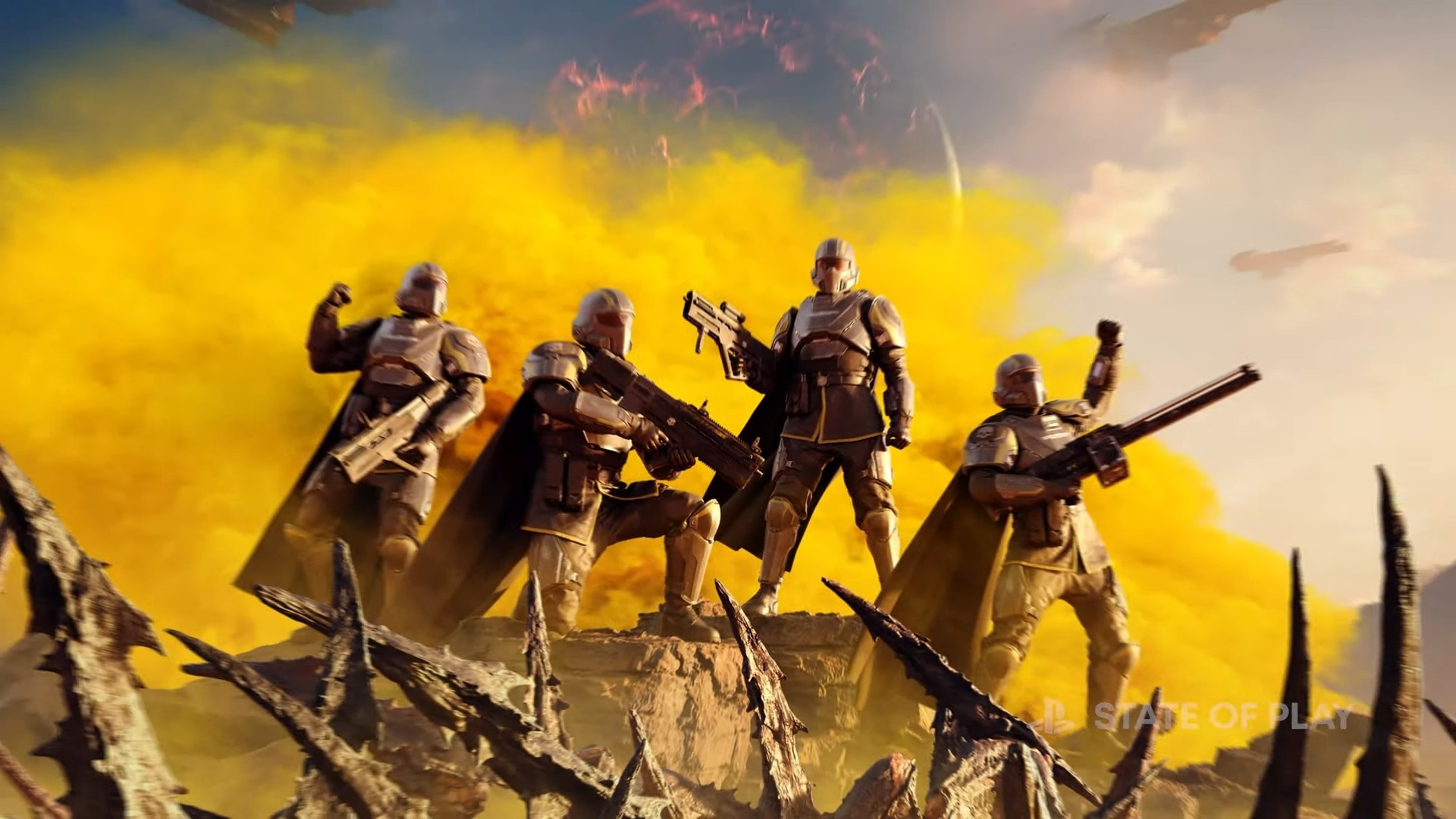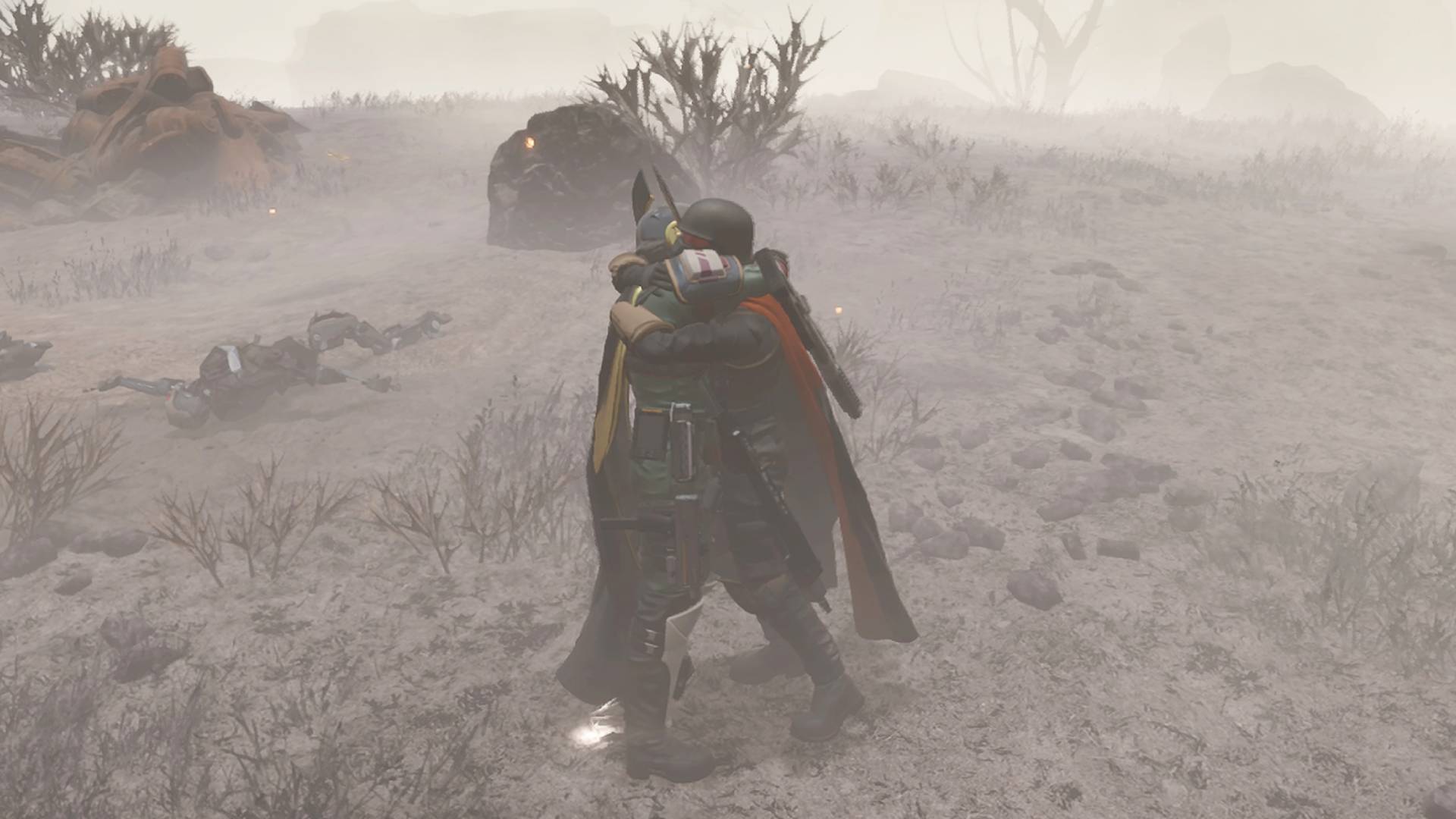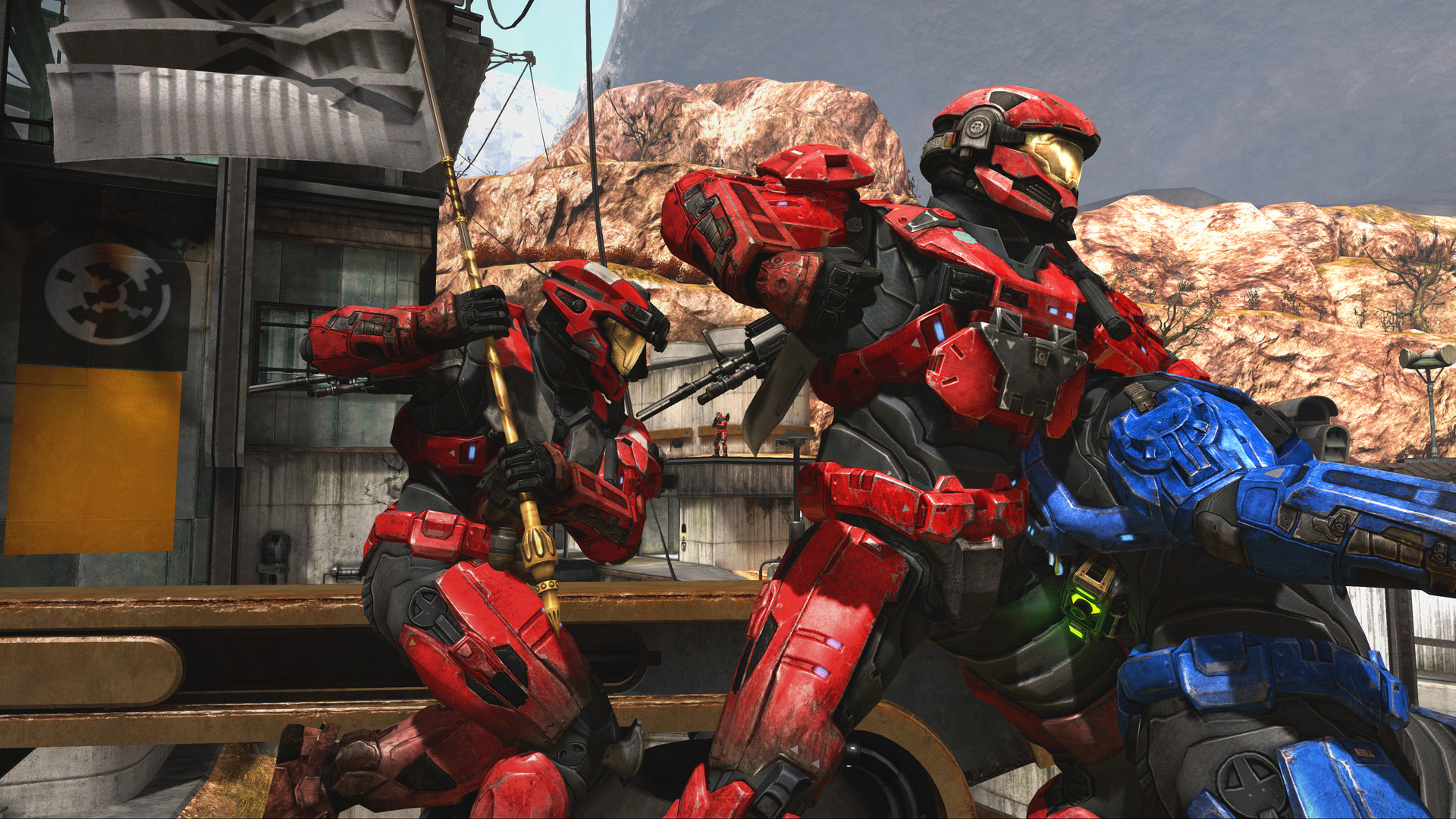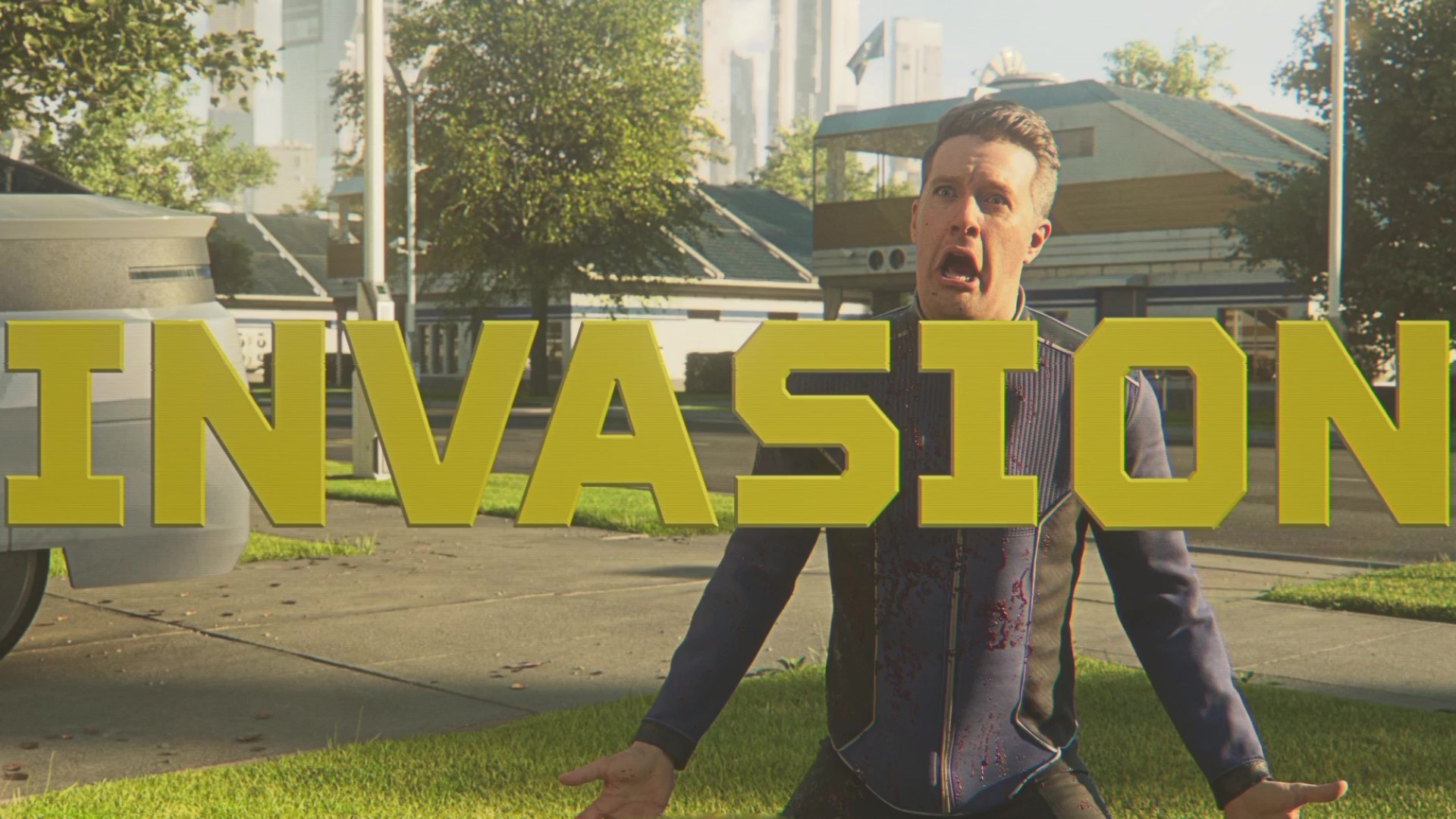
After sinking well over 30 hours into Helldivers 2, I can safely say it's accidentally the best Halo game to come out since 2010. Hold on. Halo game? Sure, there are some obvious similarities between the two sci-fi series – both have a similar militaristic aesthetic and are shooters that see humanity waging war against advanced alien factions with elite troopers that plummet into battle from orbit – but beyond that, they're quite different thematically and mechanically.
However, Helldivers 2 perfectly embodies the glorious and hilarious multiplayer carnage that those Bungie-era Halo games from over a decade ago provided. While many Halo players' experiences are defined by the white-hot crucible of Halo 3's Lone Wolf playlists or classic LAN parties, mine (and I’m sure many others') were defined by accidentally fragging my friends or running them over while driving a Ghost. Cooperative play, whether it's through the Campaign, Multiplayer, and later the Firefight mode, has always been a core part of my experience with Halo and it's great that Helldivers 2 has allowed me to rediscover the same joy. But that has also left me wondering why Halo: Infinite and 343 Industries' previous games just haven't landed with me in quite the same way.
Like peas in a Hellpod

In the canon of Helldivers 2, the titular, fragile heroes with fancy capes have an incredibly short life-expectancy of a mere two minutes. This might be because of the gnashing claws and mandibles of the Terminids or the unrelenting, heavily-armored Automatons, but based on my time playing, a big part of it is your own teammates.
For me, these friendly-fire incidents are crucial to the joy of Helldivers 2, no matter how annoying they can be. It comes down to the fact that all players can gradually unlock an increasingly bonkers armory of weapons. Starting from a humble assault rifle, machine gun, and precise orbital strike, players can eventually work their way up to half-ton bombs, railguns, grenade launchers, and orbital lasers. Giving all players access to this ludicrous weapon sandbox is what makes Helldivers 2 so unmistakably a Halo game in disguise, and so fun when playing with friends because, inevitably, it all goes wrong.
Committing to giving players such a varied and overpowered sandbox of weapons to pick from is a foundation of Halo, and what has made it one of my favorite video game series of all time. There aren't many other games where you can charge up a Spartan Laser to hit an enemy vehicle, only for your teammate to walk in front as it fires, getting vaporized too, but Helldivers 2 brings its own brand of discord with its spectacular Stratagems. Seeing your friends get obliterated by a stray shot from your own orbital barrage makes me laugh out loud, even in the most stressful high-difficulty missions where every life counts, and enemy hordes are unending.
It goes the other way too, in that both series offer plenty of ways to help and not just hinder your teammates. For example, most vehicles in Halo require multiple players to operate effectively, and some of Helldivers 2's most powerful weapons are best when a friend takes the ammo to help you rapidly reload. Whether you're being a good friend or a right bastard, both Bungie-era Halo and Helldivers 2 are better co-op experiences for allowing these teamwork and team-killing moments, creating a perfect mix of camaraderie and chaos. It's both a good reminder that communication and careful use of your gear is key to staying alive – and it's also really funny.
Combat Devolved


Helldivers 2 is a masterclass in designing comedy not just for its sandbox, but its satirical world too.
So why is it that every main Halo game since Halo: Reach in 2010 hasn't quite scratched the same chaotic co-op itch that Helldivers 2 has? It’s not like that diverse sandbox of weapons that Halo is known for has gone away in the last 14 years, but there seems to have been a clear shift in priority when it came to PvP that had wide-reaching effects.
I've felt that the modern era of mainline Halo games from 343 Industries have had a habit of following the trends of the industry-leading shooters. Halo 4 introduced Call of Duty Killstreak-like personal ordnance drops and Halo 5: Guardians' microtransaction hell and Big Team Battle-equivalent mode, Warzone, introduced Req Pack cards. These kinds of personal power and progression systems are certainly fun to use, but they completely oppose the more teamwork-oriented nature of Halo's roots. Why squad up in a Warthog with your friends when you can call in your own Scorpion tank or Banshee?
Along with new movement mechanics and a lesser emphasis on PvE outside the campaign, Halo 5: Guardians in particular felt like a real step back for cooperative play in Halo in general, despite the campaign being built with it in mind. Halo Infinite certainly made improvements in this department, but the notable absence of core features at launch, including online campaign co-op and Forge was a huge disappointment. Moreover, recent news of more adventurous pitches for Halo games, including a game like Helldivers 2, failing to get off the ground has not only been a sad glimpse at what could have been for Halo, but also suggests that not even Xbox seems to know what to do with its most recognizable franchise.
All this has essentially allowed a 100-strong Swedish studio to fill the gap with a phenomenal, sci-fi, co-op shooter with a huge weapons sandbox and strong emphasis on teamwork. With Halo Infinite now in its final season, things are winding down for 343 Industries to move onto other projects – hopefully ones that branch out from the prestigious, flagship franchise rut that Master Chief seems to be stuck in. For now, it seems like my friends and I will be spreading Managed Democracy for a little while longer before bringing the war back to the Covenant.
Have fun locking and loading with the best shooters right now







